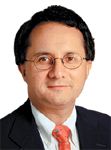Opinion: Is there really a physician shortage?
America is not suffering from a physician shortage but from a disorganized, fragmented health-care delivery system.

There's no doubt that the number of US allopathic medical school graduates is inadequate to fill the available postgraduate medical training slots offered. In 2006 there were 24,085 residency positions offered but only 15,905 US medical school graduates available to fill them. The surfeit of unfilled slots were primarily filled by international medical graduates (IMGs), which while of possible benefit to the US, deprives their nations of needed physicians since most choose to stay in this country.
But the real question is whether we need even the current number of residents? I doubt it. From 1991 to 2001, the physician workforce increased 26%, twice the rate of US population growth.4 The number of per capita physicians in this country has climbed from 200 per 100,000 people in 1980 to 239 in 2001 and is expected to climb to about 293 by 2010, a 47% increase.4,5 So the problem is clearly not too few doctors.4
Traditionally, there has been a geographic maldistribution of doctors toward more affluent metropolitan areas. Indeed, there is a 60% difference in the number of physicians per 100,000 people between regions in the lowest quintile and those in the highest.2 However, in the past two decades this skewed distribution has improved with non-metropolitan areas experiencing a relatively higher proportional growth in physicians per 100,000 than metropolitan areas (23.2% vs. 10.3%) and towns of 10,000 to 50,000 people experiencing the greatest growth in physician supply.4
Perhaps of more importance, the relative "deficiency" of doctors in nonmetropolitan regions does not translate to inadequate care since Medicare composite quality scores and patient satisfaction surveys are essentially the same between the highest and lowest physician supply quintile regions.2 In fact, one study suggested that regions with higher physician supply and health-care costs provided inferior care because of the overuse of specialists.6 It is interesting to note that the most rural areas in the nation have the best ratios of generalists to specialists, although the per capita number of physicians remains far too low in America's rural areas (65/100,000).4 Thus, there appears to be an oversupply of physicians and particularly specialists in metropolitan areas that results in higher costs and certainly no higher quality of care and a continued long-standing need to increase physician supply in rural regions. So what is the source of the recent physician shortage estimate?
